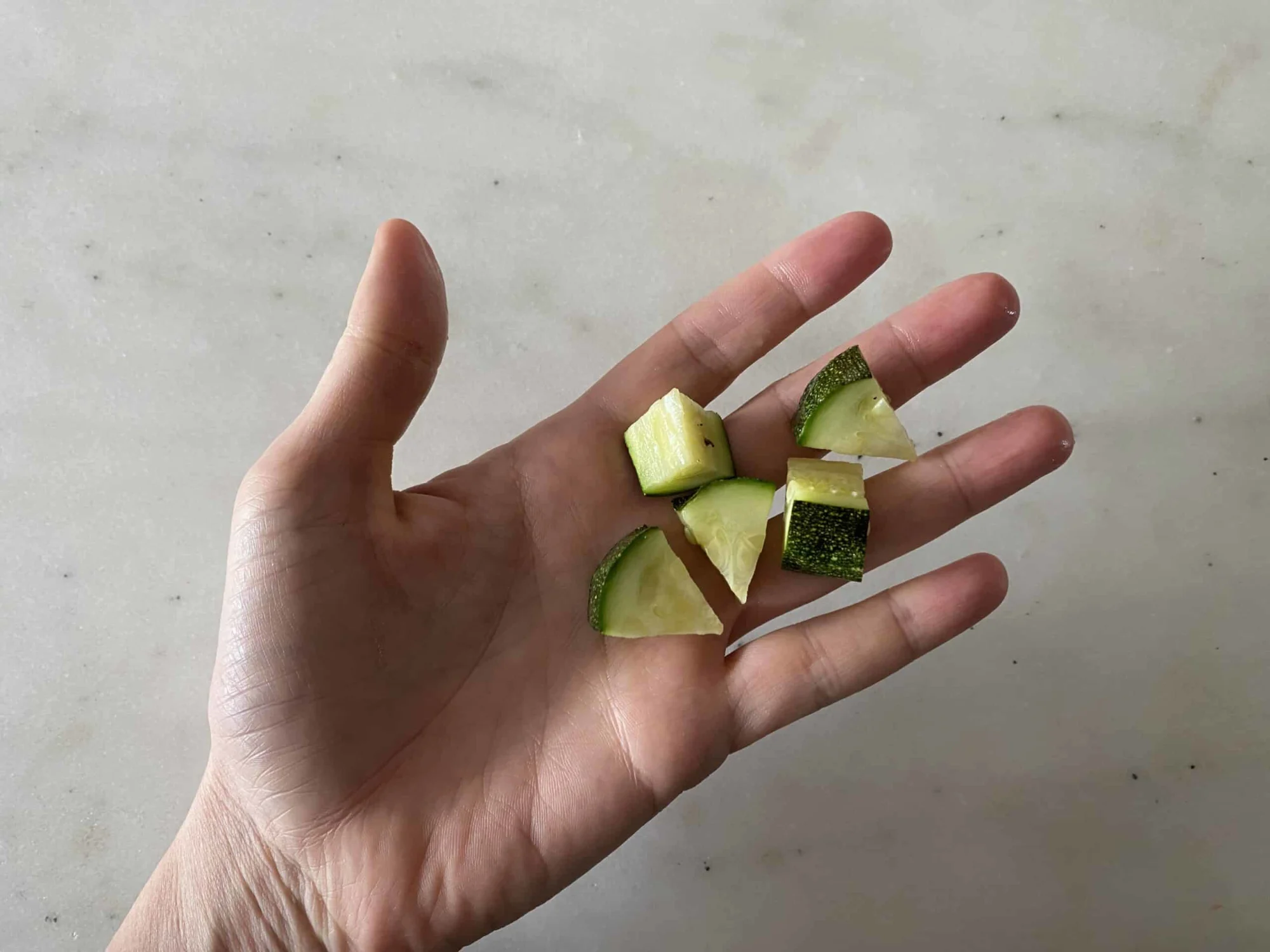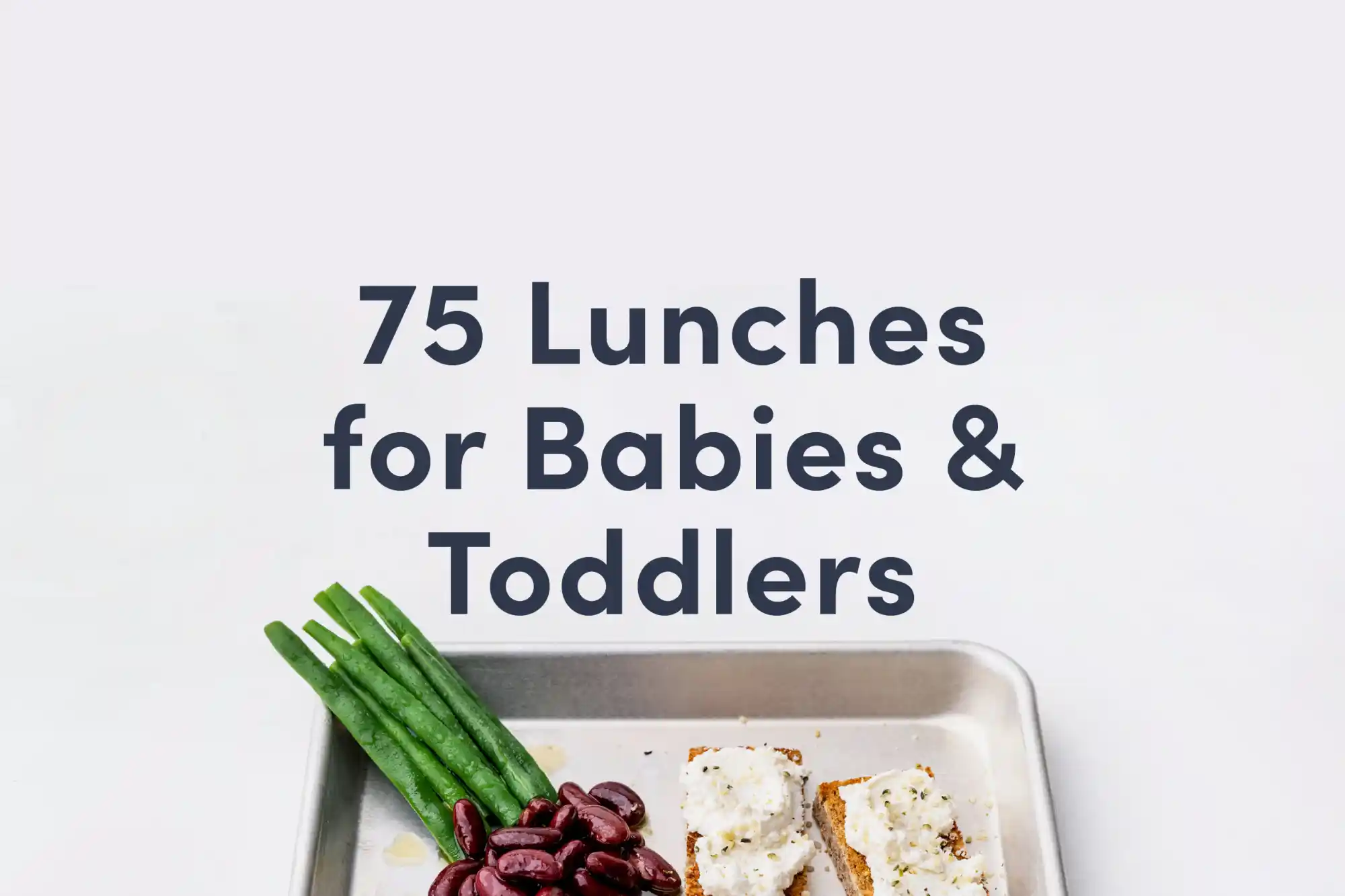Zucchini
Vegetable
Age Suggestion
6 months
Iron-Rich
No
Common Allergen
No

When can babies have zucchini?
Zucchini may be introduced as soon as baby is ready to start solids, which is generally around 6 months of age.
A staple food for Native Americans, squash was brought by Spanish colonizers to Europe, where the gourds called ayohtli by the Nahuatl people of Mesoamerica changed in shape and size through cultivation by Italians, who called the squash by the diminutive of zucca, their word for squash. Today, zucchini have different names depending on where you live: calabacín, courgette, marrow, and quả bí ngòi to name a few.
Is zucchini healthy for babies?
Yes. Zucchini is loaded with beta-carotene that our bodies convert to vitamin A, which supports our immune system and powers our eyesight along with the lutein and zeaxanthin that are also present in the summer squash. Zucchini also offers plenty of vitamin C, which helps our bodies absorb iron from plant-based foods to create healthy blood cells. Lastly, zucchini contains vitamin B6, folate, vitamin K, and copper—important vitamins and minerals that baby needs to thrive. Vitamin B6 is essential for brain development and folate is vital for growth, and both nutrients can be insufficient in toddlers’ diets.
Is zucchini a common allergen?
No. Cases of zucchini allergy have been reported but it is not a common allergen. However, individuals with ragweed allergy may experience symptoms of Oral Allergy Syndrome (also called pollen-food allergy syndrome) after consuming raw or lightly cooked zucchini. Symptoms can include oral itching and tingling and occasionally mild abdominal pain. The good news is that Oral Allergy Syndrome is only rarely associated with serious reactions.
As you would when introducing any new food, start by offering a small quantity on its own for the first few servings. If there is no adverse reaction, gradually increase the quantity over future meals.
Is zucchini a choking hazard for babies?
Yes. Raw or undercooked zucchini can be firm and challenging to chew, qualities that increase the risk of choking. To reduce the risk, prepare and serve zucchini in an age-appropriate way as described in the How to Serve section. As always, make sure you create a safe eating environment and stay within an arm’s reach of baby during meals.
Learn the signs of choking and gagging and more about choking first aid in our free guides, Infant Rescue and Toddler Rescue.
How do you serve zucchini to babies?
Every baby develops on their own timeline, and the suggestions on how to cut or prepare particular foods are generalizations for a broad audience.
6 months old +:
Cook zucchini until soft and serve on its own as spears or sticks, around the size of two adult fingers pressed together. Feel free to leave the skin on or remove it—at this age, baby may scrape the soft zucchini flesh away from the skin, and the skin will help the piece hold together in baby’s hand. Alternatively, shred raw zucchini and offer on its own in a bowl for scooping or mixed into other foods like grain dishes, mashed legumes or root vegetables, scrambled eggs, or yogurt. Cooked zucchini noodles or zoodles are also fine at this age, although some babies may struggle to pick them up.
9 months old +:
Once baby develops the pincer grasp (where the finger and thumb meet), try moving down in size to bite-sized pieces of cooked zucchini. You can also continue to offer cooked spears or sticks for biting and tearing practice. Lastly, you can offer zucchini noodles that have been cooked until soft.
12 months old +:
Continue serving bite-sized pieces of cooked zucchini and mixing bite-sized pieces or slices of cooked squash into casseroles, egg, grain, and lentil dishes. At this age, zucchini fritters, noodles, or pancakes are a great choice, too.
18 months old +:
Serve cooked zucchini as desired, and at this age, many toddlers are ready for raw zucchini. Try cutting the zucchini into thin slices or sticks, and feel free to offer with a dip to help the child engage with the meal.


How to cut zucchini in preparation for cooking (for babies 6 months +)
For more information on how to cut food for babies, visit our page on Food Sizes & Shapes.
Written by
Expert Tips Delivered to Your Inbox
Sign up for weekly tips, recipes and more!
The content offered on SolidStarts.com is for informational purposes only. Solidstarts is not engaged in rendering professional advice, whether medical or otherwise, to individual users or their children or families. No content on this site, regardless of date, should ever be used as a substitute for direct medical advice from your doctor or your medical or health professional, nutritionist, or expert in pediatric feeding and eating. By accessing the content on SolidStarts.com, you acknowledge and agree that you are accepting the responsibility for your child’s health and well-being. In return for providing you with an array of content “baby-led weaning” information, you waive any claims that you or your child may have as a result of utilizing the content on SolidStarts.com.








